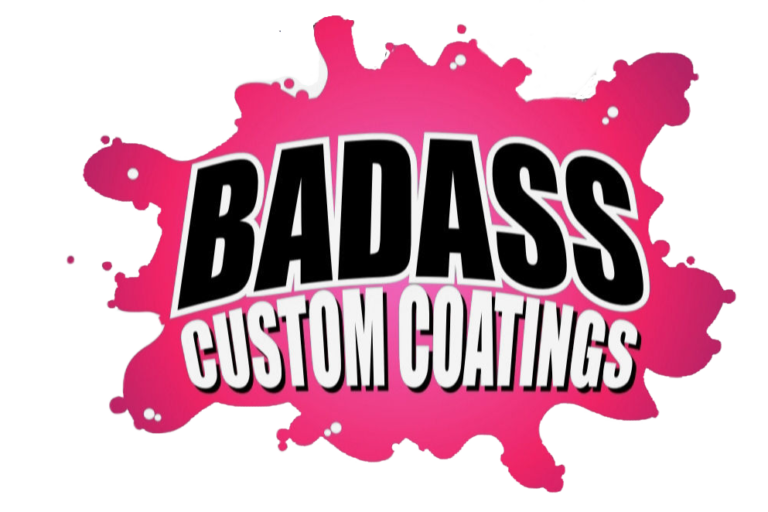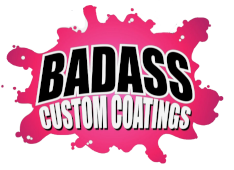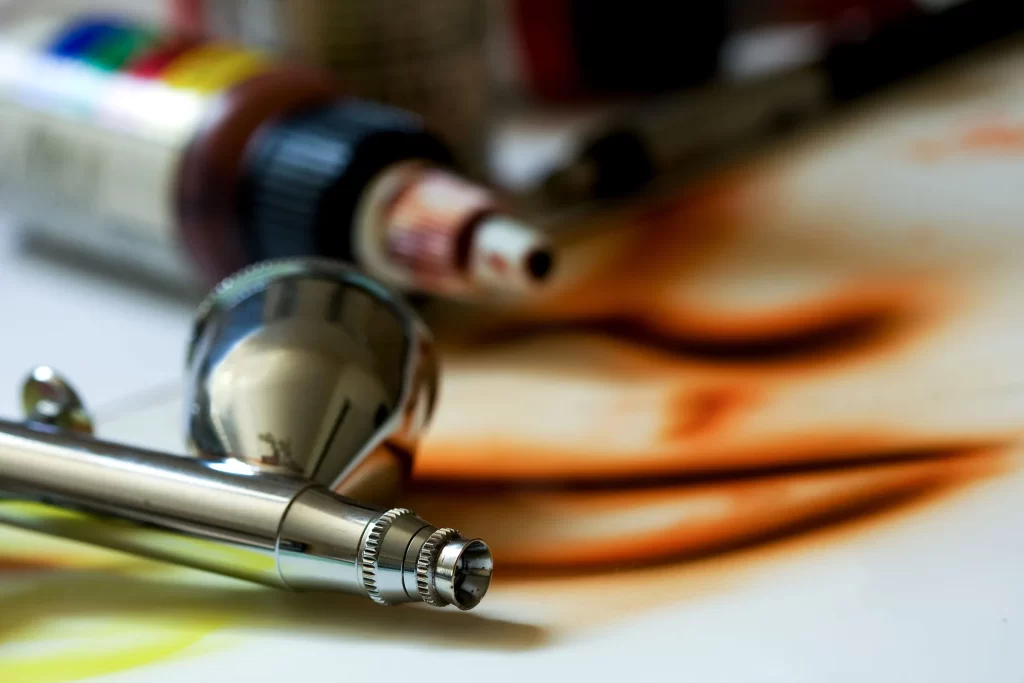Frequently Asked Questions
Here are the questions that are asked the most…
Q: What’s the best airbrush for beginners?
A: Most makers and creators begin their airbrushing journey with a gravity feed dual action airbrush. These models are simple to use, easy to clean and are well suited to a wide variety of applications. The two models listed below are two of our most popular choices.
- NEO for Iwata CN – designed to deliver soft, effortless coverage at low air pressures, the Neo CN is an easy choice for straight forward spraying.
- Iwata Eclipse HP-CS – Many Iwata fans will tell you that this is their favorite airbrush and the one they use everyday. The Eclipse’s high flow design allows it to atomize a wider variety of liquids with less need for reducing or thinning.
For more recommendations, just call and ask us what will best suite your needs
Q: Why won’t my airbrush spray?
A: Most of the time it is because the airbrush needs to be cleaned.
We have an entire page dedicated to Airbrush Cleaning page with videos and step by step instructions.
We also have a full Troubleshooting Guide for airbrushes and compressors.
Q: Why does my airbrush bubble?
A: Usually bubbles in the fluid cup or bottle are caused by an air leak. Here are the steps to resolve bubbles in your airbrush cup:
- Make sure nozzle cap is finger tight and/ or tighten air cap with wrench (Eclipse series only)
- Remove and reinsert nozzle. For older airbrushes, try applying Medea Thread Sealer to the nozzle threads if there are scratches where the nozzle meets the body
- If the airbrush still bubbles, the nozzle may need to be replaced
We have an entire page dedicated to Airbrush Cleaning page with videos and step by step instructions.
We also have a full Troubleshooting Guide for airbrushes and compressors.
Q: Is airbrushing safe?
A: Airbrushing is generally safe. But it depends on the type and volume of paint used.
Are you spraying small projects using water-based paint? In this case a well-ventilated area and a dust mask will be enough protection.
Spraying larger projects or using solvent-based paints? In these cases, we advise wearing extra protection such as a respirator and gloves. If unsure, check with the manufacturer of your paint or spray medium. It is always best to follow their safety recommendations.
Every airbrush user should pick up an Iwata Universal Spray Out Pot. This is one of our most popular accessories. The Spray Out Pot eliminates overspray (extra paint) in the air during cleaning and color changes. Its dishwasher safe and it doubles as an airbrush holder.
Q: What makes Iwata airbrushes different?
A: It’s all about reliable quality and service. Iwata brand airbrushes are made in Japan to exacting standards from the finest raw components. Our company, Anest Iwata-Medea Inc. are the world-wide distributor of Iwata brand airbrushes, compressors, and accessories. We carry all the parts for all airbrushes for you here.
Q: What is a head system?
A: The head system are the parts at the front of the airbrush. These work together to produce a given airbrushes spray scale and performance.
The following parts make up a head system:
- Needle
- Nozzle
- Nozzle Cap
- Head Cap (Eclipse)
- Needle Cap.
- Head Base (Micron/Neo TRN Series)
Q: Why are there different size head systems (tips/cones/nozzles and needles) on airbrushes?
A: Airbrushes come with different size head systems ranging from super fine to large. Smaller sizes are best for detailed spraying of thin paints. Larger sizes are better at spraying a greater volume of thicker paints.
Head system size does affect the spray pattern. But that’s only a part of the story. Users shouldn't get too hung up on small differences in size. There are many other factors that affect an airbrush’s spray performance or that would make a particular airbrush better suited to a given project.
Head System parts are designed to work together to create a specific type of spray performance and scale range. For example:
Needle and nozzle caps focus the flow of air in different ways.
Nozzles are made in various shapes, sizes and materials.
Needles are made in a variety of lengths, diameters and tapers.
All these parts combine to create a specific type of spray for each Iwata Airbrush. That is why we categorize our airbrushes into 5 Ways to Spray.
But head system parts aren’t the only factors that impact spray performance. If you are not achieving the effects that you want, consider the following factors:
- Viscosity and quality of the paint
- User knowledge and skill level
- Cleaning practices and maintenance
- Air pressure used
Q: Needles, Nozzles and Caps all look alike. Are these parts interchangeable?
A: Head system parts are model-specific and are not interchangeable. To ensure proper performance, only use the replacement parts made for your airbrush.
We’ve made it simple.
Just call us to find the parts you need-
Iwata airbrushes are engraved with the model number on the side of the airbrush. Example: HP-CH or HP-CS. You can use our Parts Finder Tool right on this website to ensure that you are using the correct replacement components. Simply select your airbrush series, then your model.
You can also get a printed the manual and parts diagram for your airbrush, just contact us.
Q: What parts of my airbrush should I expect to replace?
A: Nozzles and Needles will wear out over time and will need to be replaced. These parts are also the most often lost and accidentally mishandled. For these reasons, we recommend always keeping a spare needle and nozzle on-hand.
To prolong the life of these parts, follow these simple dos and don'ts:
- Don’t remove the nozzle unless it is damaged or clogged.
- Don’t ever let paint dry in your airbrush as dried paint can clog the nozzle.
- Do use our Nozzle Wrench when you do have to remove the nozzle
- Don’t let up on your trigger so that it snaps the needle forward into the nozzle. Ease off of it gently.
- Don’t separate the two parts of the Eclipse HP-CS nozzle
- Do be careful when replacing or removing the nozzle to not overtighten or cross thread it.
- Do use the Iwata Cleaning Mat to keep parts from rolling away
Although engineered from durable, high-quality materials, the nozzle is small and delicate. Accidental damage is not covered under warranty. Neither is replacement needed from normal wear and tear. A nozzle can be damaged by: cross threading, over-tightening, dropping the airbrush, forcing a needle or tools into the nozzle. Replacement parts and service are available through your local dealer or affiliate.
Q: Can I convert my airbrush to a different size? What parts of the head system do I need to change?
A: Sometimes users would like to change their airbrush parts to a smaller or larger size. Often the goal is to paint thinner lines. Typically, we do not recommend conversions.
Size differences within a series are very, very small. Many users will not notice an appreciable difference in spray pattern. But of course, some do. Also, be aware that converting to a different size voids the warranty of your airbrush.
If you choose to convert your airbrush to a different size, make sure you use the correct parts. You will want to ensure you have the needle, nozzle and nozzle cap for your airbrush model. Without all three of these parts the airbrush will not perform properly.
Q: What is the optimal working pressure (PSI) for my airbrush?
A: You can find this information on the Specifications tab on each airbrush product page. Be aware that thicker spray materials often need more working pressure to spray. The goal is always to use enough pressure to atomize your paint properly but not too much that you get overspray in the air.
As a general rule, most airbrushing is done around 20 – 40 PSI.
Q: Do I need a special compressor for my airbrush?
A: You can use almost any air compressor if it provides enough air to power your airbrush. Ideally you will want air regulation as well. In other words, you will want to be able to control the air pressure. This is because most airbrushing is done with a working pressure of around 20 to 40 psi. Working pressure is the air pressure used by your airbrush when the trigger is held down and air is moving. Always make adjust your pressure when the airbrush is releasing air. Otherwise, you are seeing the built-up pressure in the compressor, not what you are spraying at.
Air compressors available in hardware stores, or “shop compressors", will work too. But be aware that these compressors are often very loud and are not well suited for the work of many makers and creators. That’s why Iwata compressors are designed to be quiet, so they are perfect for use in small spaces. On the other end of the spectrum, beware of using very small compressors on medium to large airbrushes.
Q: What types of material can be sprayed through an airbrush?
A: An airbrush can spray almost any type of liquid. But it needs to be thinned to a flowable consistency with the correct thinning agent. The consistency of Skim milk or thinner is ideal.
Spray material must also be free of chunks and clumps. These will obstruct the nozzle of the airbrush and cause clogging.
We recommend using high quality, airbrush-ready paints whenever possible. Especially if you are new to airbrushing. Make sure you always have an plenty of the appropriate airbrush cleaner on-hand. White pigment and metallic formulas are the most difficult to spray and to clean due to larger pigment sizes.
Q: How can I get my airbrush to spray a thinner line?
A: Thinner paints, lower pressure, get closer and practice.
Thinner paints at lower pressures will have better control and flow. Lower your pressure, thin your paint and practice how far you pull your main lever back, to control how much paint is sprayed while bringing the tip of your brush closer to your work surface. This will take practice, so don’t be discouraged if you don’t get results right away. Keep practicing until you get the feel of it.
Q: What is meant by dual action and single action?
A: Single action airbrushes are activated by simply depressing the main lever. To change the amount of spray you must stop airbrushing and reset the needle adjustment screw.
Dual-action airbrushes offer much more control. When the main lever is depressed, the airbrush only releases air. The second action of pulling back on the main lever releases the paint. This dual-action - down then back - lets you to adjust the volume of spray simply by manipulating the main lever. This creates dynamic lines with varying widths. No need to stop and adjust. This is why almost all Iwata airbrushes are dual action.
Q: Is an airbrush hard to keep clean?
A: Airbrushes are not difficult to keep clean. No more so than other art and hobby materials.
Our Airbrush Cleaning page shows you how to perform a Quick Clean, End of Session and Deep Clean step by step. We've also made our full color instructions included with the Iwata Cleaning Kit available free for download.
Q: Does Iwata offer airbrush kits?
A: We offer airbrush kits for those who want the ease a one-box option. Our Iwata Airbrushing Kit is one of our most popular choices. It is perfect for those just getting started. Explore our full selection of Iwata airbrush kits.
Q: What is the best airbrush for airbrush makeup?
A: Think in terms of spray characteristics when choosing the best airbrush. This is true for any use including makeup.
This is why Iwata offers 5 categories of airbrush excellence. Those looking to apply makeup will find a great choice in nearly every category.
Q: How can I learn to airbrush?
A: There are more resources online than ever before for learning anything- including airbrush! But it can be hard to know where to start. No matter what kind of airbrushing you want to do, it is best to begin with simple exercises. These will help you learn to control the airbrush. The exercises included with our NEO for Iwata Gravity Feed Airbrushing Kit with NEO CN are a great place to start.
Q: Is it hard to learn to airbrush?
A: As with any creative skill, it takes time and dedication to achieve airbrush mastery. But beginners are often surprised how quickly they can get impressive results with the right tools.
Try watching different videos on YouTube for different teachers, or find a local school or class that teaches the basics and “practice practice, practice” and it won’t take long to gain the skills to be a great air brusher!
Q: The inside of my fluid cup looks a little discolored. Is this normal?
A: Don’t worry! Its normal for there to be a little fading, tarnishing, or discoloring over time. This patina-like effect could show up right away, in a few years or never at all. What’s most important to know is that these changes have no impact on the performance of your airbrush.


